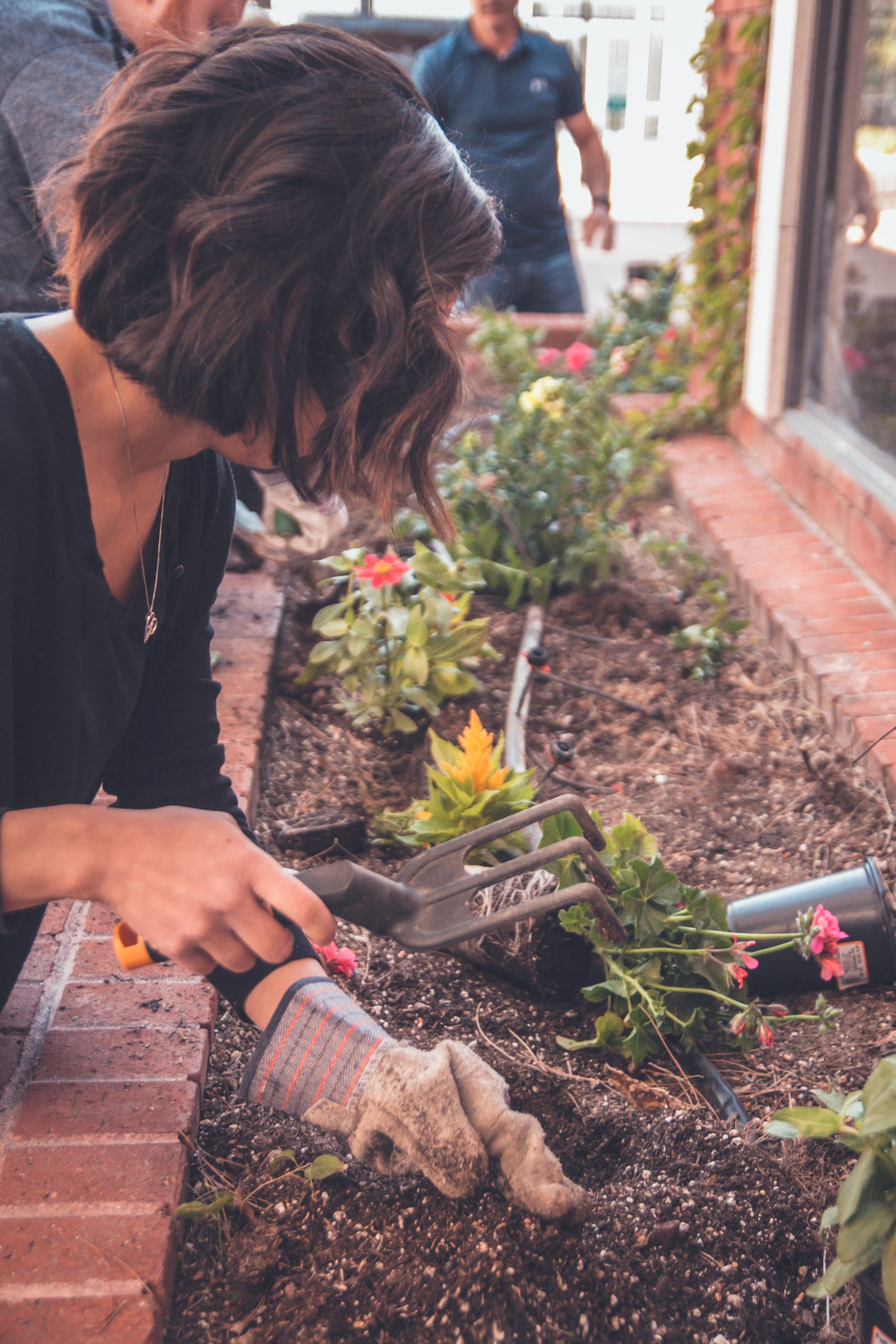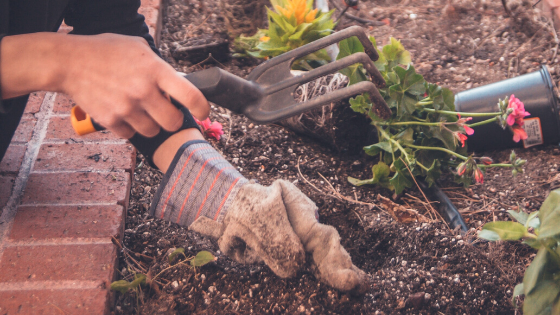
Weeding.
Some find it therapeutic.
Some dread the process.
But no matter your perspective on handling these garden invaders, weeds are an inevitable challenge to any gardener.
There are, however, several sustainable ways to prevent and remove weeds.
Keep reading for 5 ways to sustainably prevent & remove weeds from your garden.
1. MULCH.
Mulch is like armor for your plants.
Picture this: a breeze brings in weed seeds into your garden, but those rogue seeds are goners when they land on your protective mulch layer, as it prevents the seed from reaching the soil below to grow.
Mulch also serves as a barrier for the weed seeds that are already nestled in the soil, blocking out the crucial sunlight the seeds need to grow.
Another benefit: mulch retains moisture in your soil.
You have several organic mulch options:
- Wood chips
- Shredded bark
- Grass clippings
- Leaves
- Straw
However, grass, leaves, and straw all contain those tiny weed seed buggers, so as these organic materials break down and add the weed seeds to the soil, you’ll need to continue adding more mulch to prevent sunlight from reaching the soil and allowing the seeds to grow.
Wood chips and bark won’t break down as quickly, so you won’t need to replace this type of mulch as often.
When applying mulch, remember Goldilocks: not too much, not too little, but just right. Aim for mulch that is 3 inches thick.
Be sure to allow for space between your mulch and plant stems and trunks—generally 1 – 2 inches.
2. LANDSCAPE CLOTH.
Landscape cloth or fabric, like mulch, serves as a protective layer—keeping dropped weed seeds from reaching the soil, prohibiting seeds below the cloth from popping up, and retaining soil moisture.
The use of landscape fabric goes hand-in-hand with mulch; after the fabric is in place, you’ll cover with mulch. Landscape fabric is typically used around trees, shrubs, or bushes, and not in vegetable gardens since it’s meant to remain in place long term after being set.
You can find landscape fabric in rolls from your local hardware store. Additionally, you’ll need landscape pins (commonly called sod pins) to hold the fabric in place. This article shares how to install landscape fabric.
However, landscape cloth has its disadvantages to soil health, prohibiting earthworms from reaching the soil surface (needed for survival) and preventing natural mulch from decomposing and adding organic nutrients back to the soil beneath the fabric.
Avoid—at all costs!—cheap plastic landscape “fabric,” as these can easily tear and are harmful to the soil. Another downfall: recycling centers typically will not accept landscape fabric.
While landscape fabric does have its benefits, simply sticking to mulch is an equally effective method of weed prevention.
3. COVER CROPS.
Cover crop serves as “competition” with weed seedlings, with the cover crops hogging the light, nutrients, and moisture to your future garden’s benefit. Weeds that do survive, then, remain small and easy to remove.
While cover crops are a great option for weed prevention, this method involves some pre-planning. Choosing your cover crop will depend on which weed species you’re trying to control. This article offers helpful guidance on choosing your cover crops.
The other benefit of cover crops: tilling these back into the soil prior to planting crops adds in nutrient-rich organic matter, called “green manure.” We use Crimson Clover as a cover crop over winter, planting it during the fall season, then tilling before the flowers come up in the spring.
RELATED READING:
4. VINEGAR SOLUTION.
While a homemade vinegar and salt cocktail is touted as a popular natural weed killer, there are mixed results with its effectiveness.
This study by the Maryland Ag Extension on herbicidal vinegar showed that while it did quickly kill weeds (usually within 24 hours), it was effective only on very young weeds that were within 2 weeks of germination; roots were also not killed. Any of your beloved plants can become victims, so well-aimed sprays that only targeted weeds were important.
Keep in mind that herbicidal vinegar has a higher concentration of acetic acid, generally between 10 – 20%, while household vinegar only has a 5% concentration of acetic acid.
This means that your pantry vinegar won’t do the trick without some help. That’s where salt comes in to up the ante on vinegar’s weed killing power.
Your homemade vinegar weed killer will be able to kill some, but not all, of those pesky weeds. It’s recommended that you spray on sunny and dry days for best results. Repeat uses will be necessary.
However, these repeat vinegar treatments can lead to other problems, with salt buildup causing nutrition imbalances in the soil.
So take it with a grain of salt (yes, pun intended): vinegar solutions may work well in some weed killing cases, but it is not an entirely effective method.
5. PULLING WEEDS.
No matter what method you use to try to prevent weeds, these plants are sneaky, and you will inevitably have to engage in some good ol’ fashioned weeding.
For most effective weeding, get ‘em while they’re young—a younger weed’s roots are weaker, making it easier for you to pull up the whole plant. Weeds that have reached the height of your tomato plants? You’ll have a bit more trouble with those.
When manually weeding, ensure that you are pulling up weeds by the base so that the entire root is being excavated. Only grabbing the top part of the plant leaves the root system in place, allowing it to rear its weedy ahead again.
Using a “stirrup” hoe to slice the soil with small weeds may also speed up your weeding process. The University of Maine developed a video showing how to use this type of hoe. It is named after the horse riding equipment it resembles.
Wet soil makes your job easier, too. Use those summer afternoon thunderstorms to your advantage by attacking weeds after it passes, while the soil is still moist.
Not a fan of weeding? Grab your headphones and put on your favorite audiobook or podcast while you spend time in your garden! This will make the time fly by and bring more joy to the arduous task.
***
We wish you an abundant harvest and minimal weeds this summer!


